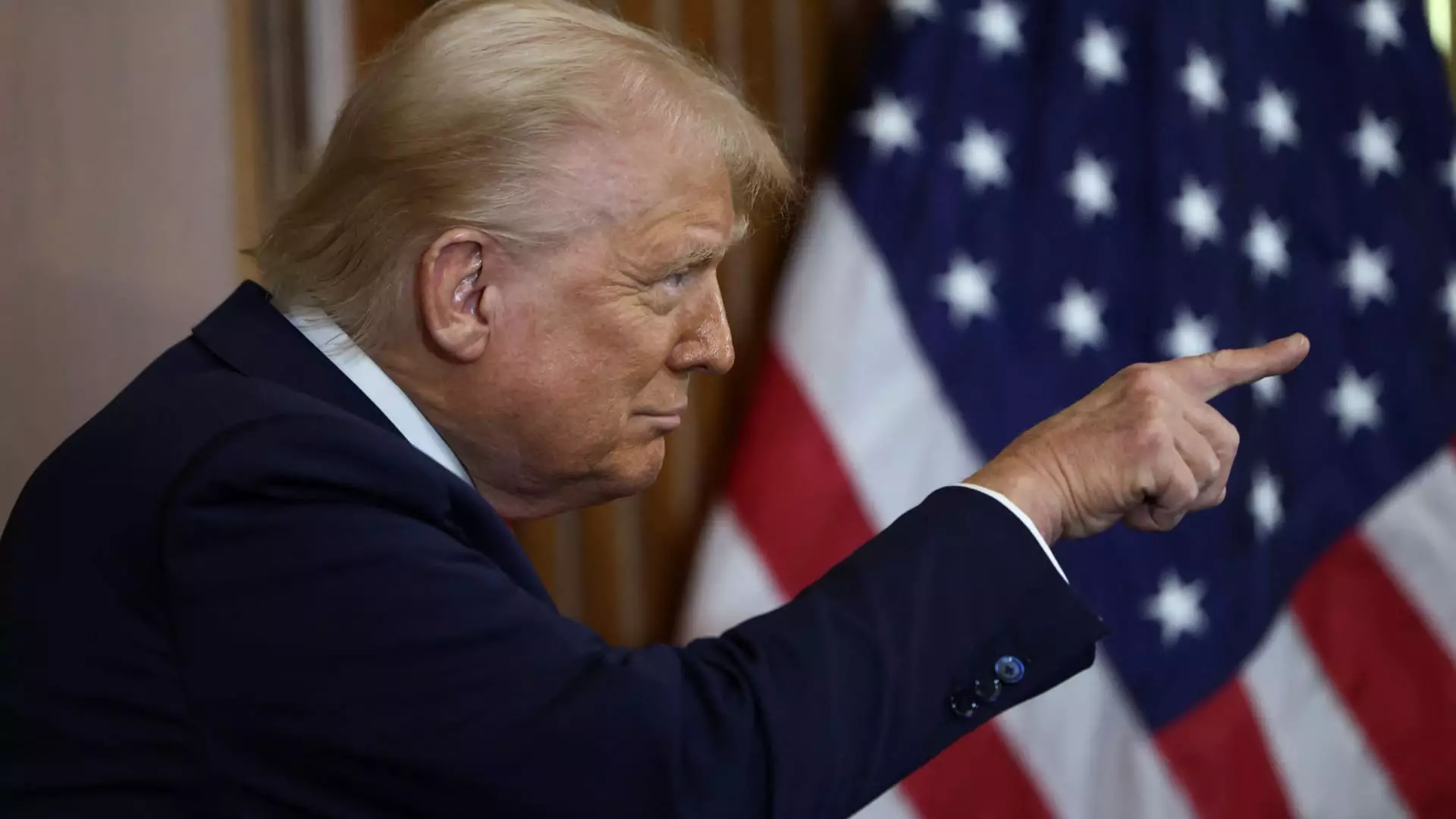Political decisions often encapsulate the very essence of societal values as they determine who bears the financial burden during times of economic difficulty. Recently, former President Donald Trump has thrown the Republican Party into a state of shock by suggesting a return to pre-2018 tax rates for the wealthiest Americans — a proposal that seems rather paradoxical coming from the architect of the Tax Cuts and Jobs Act (TCJA). This surprising move indicates a fundamental struggle within his party over fiscal responsibility, especially as they grapple with how to finance an extensive spending package. The contemplation of a tax hike sends ripples of concern about what it means for working-class Americans.
The proposed idea of increasing the top federal income tax rate from 37% back to 39.6% for individuals earning over $2.5 million a year is contentious and undoubtedly contentious within Republican ranks. Establishing a precedent that higher earners should contribute more towards the common good could be viewed as a radical departure from the usual fiscal conservatism that has defined the GOP. However, it’s also a stark reminder of the widening economic gap that continues to blister through the fabric of American society.
The Carried Interest Loophole: A Glaring Disparity
Above and beyond the tax-rate increase, Trump’s call to eliminate the carried interest loophole is equally significant in its implications. This loophole effectively allows hedge fund managers and private equity investors to treat their earnings as capital gains rather than ordinary income, subjecting them to lower tax rates. Calls to close this loophole should resonate with anyone who believes in fairness and economic justice. It’s a glaring example of how the upper echelons of society manage to escape the fiscal obligations faced by regular Americans.
Trump’s willingness to compromise, even if only nominally, hints that a growing number of voices — including his own — are finally recognizing the deceitful nature of tax structures that favor only a select few at the expense of the many. Ironically, this acknowledgment comes from a party that has monopolized the narrative of tax cuts and fiscal conservatism. While Trump suggests this tax increase could help preserve standards such as Medicaid, the question remains whether his motivations genuinely align with the needs of everyday Americans.
Economic Reality: Tax Cuts vs. Actual Benefits
The TCJA that Trump enacted drastically altered the landscape of taxation, granting significant breaks to corporations and high-income earners while providing often negligible benefits to lower and middle-income families. With the prospect of the tax breaks expiring after 2025, the urgency for a balanced fiscal plan is palpable. The question arises – does the party’s reluctance to raise taxes on the wealthy stem from a genuine belief in trickle-down economics, or is it a case of protecting their affluent donors?
Furthermore, with experts like Natasha Sarin emphasizing that current proposals do not appropriately address the cost of needed services, the situation underscores the chaos at the heart of budgeting. The dialogue about future funding ought to focus on sustainability rather than superficial increases that merely serve to placate. In essence, if there is no intent to ensure that legislation yields tangible economic benefits for all rather than just the top tier, then the cycle of economic inequity will only continue to be exacerbated.
A Navigational Challenge for the GOP
As the Republican Party delves into introspective political waters, one wonders how they will reconcile their long-standing ideologies with the emerging need for economic reform. Trump’s tentative endorsement of a tax increase exposes fractures that threaten their cohesive framework. The notion that Republicans may need to embrace more progressive taxation practices to bridge the gap is not just revolutionary; it is required.
For those of us who lean toward a liberal outlook, this shift is not merely welcomed; it is seen as essential in addressing growing disparities. The dynamics of tax policy go beyond numbers—they represent the societal choices we make about who we are as a country. We must ask ourselves whether we want to fortify a system that puts profits over people.
These discussions are not merely academic; they have real-life implications for millions of Americans. The crux of Trump’s proposal necessitates a departure from traditional Republican dogma and calls into question the very narrative that has long dominated the party discourse. Now is a pivotal moment to embrace a more equitable approach to taxation that genuinely uplifts the disadvantaged while still accounting for the contributions of those at the top.

